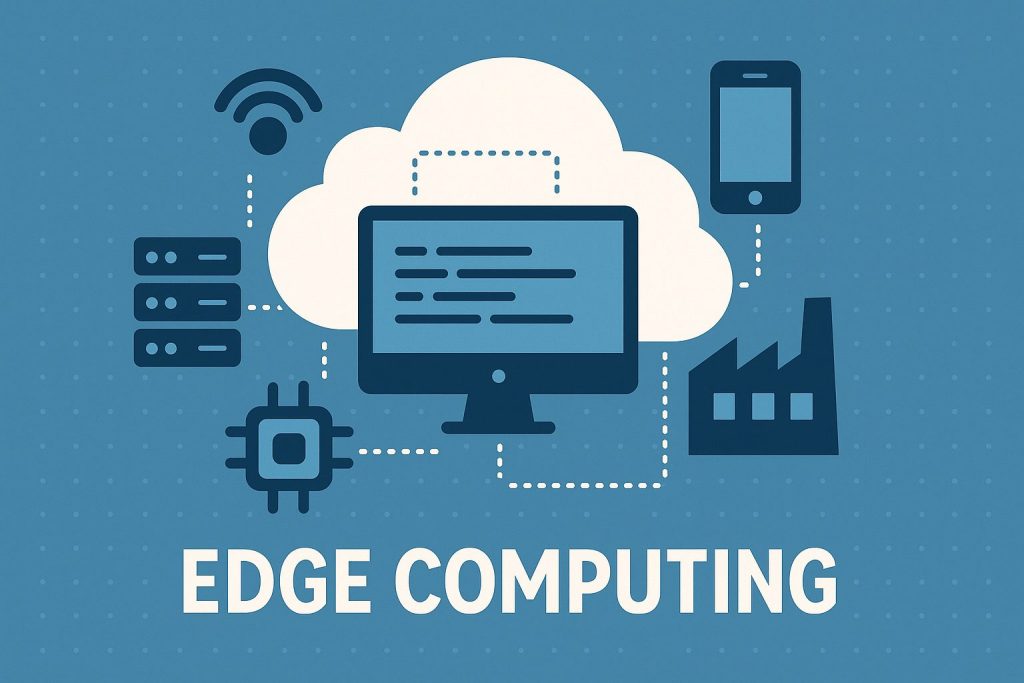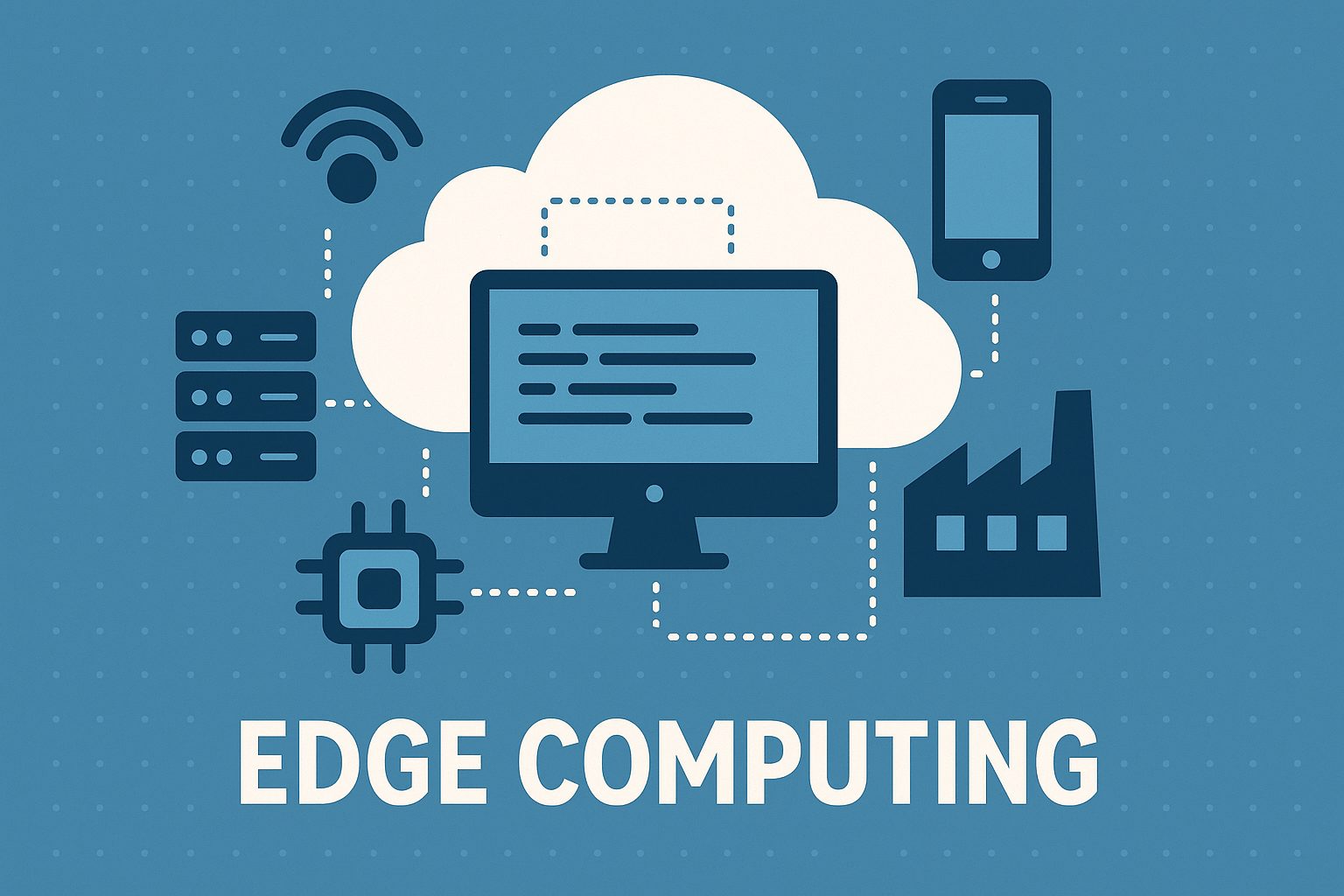
In today’s fast-paced digital world, where speed and efficiency are top priorities, edge computing has emerged as a powerful solution for improving data processing, reducing latency, and enhancing real-time decision-making. Understanding what edge computing means and how it works helps developers, businesses, and tech enthusiasts grasp why this technology is shaping the future of the internet. In this article, we’ll dive deep into what edge computing is, explore a simple edge computing example, and discuss its benefits, challenges, and real-world applications.
Understanding What Edge Computing Really Means
Edge computing is a distributed computing model that processes data closer to its source rather than relying entirely on a centralized cloud or data center. Instead of sending all information to a remote server, edge computing enables devices, sensors, and local servers to analyze data where it’s generated. This decentralized approach drastically reduces data transfer time and enables instant responses.
At its core, edge computing focuses on minimizing latency and enhancing performance across digital systems. Consider a network of smart cameras monitoring traffic in a city: instead of sending every frame to a cloud server, each camera processes its own data to detect congestion or violations in real time. This local processing not only saves bandwidth but also ensures immediate detection and response.
The concept of edge computing is rapidly growing as the Internet of Things (IoT) expands. With billions of devices connected worldwide, traditional cloud infrastructures struggle to handle the massive data flow effectively. Edge computing steps in as a smart alternative, optimizing how information is handled and enabling a new era of intelligent, autonomous systems.
Why Edge Computing Is Changing Data Processing
Traditional cloud processing requires data to travel long distances to centralized servers, which can cause delays when timely decisions are critical. Edge computing changes this dynamic by keeping data analysis close to where it’s collected. This approach reduces reliance on a constant internet connection and improves the overall speed of data transmission.
In industries like healthcare, transportation, and manufacturing, even milliseconds can make a difference in decision-making. Edge computing enables devices to react quickly and locally, paving the way for safer autonomous vehicles, smarter factory automation, and faster diagnostic tools.
The change brought by edge computing is not just about speed; it’s about transforming infrastructure design. By distributing computing power across devices and micro data centers, organizations create a more resilient and flexible ecosystem that supports innovation at the edge of the network.
Key Benefits of Using Edge Computing
Edge computing brings significant advantages that are becoming even more relevant nowadays. First, it reduces latency by allowing data to be processed locally, resulting in faster response times. This is crucial for applications like augmented reality, robotics, and autonomous vehicles where milliseconds matter.
Second, edge computing lowers bandwidth usage and cloud costs. Since not all data needs to travel to centralized servers, businesses can manage their resources more efficiently. Only important or summarized data gets sent to the cloud for storage or further analysis.
Finally, edge computing enhances data privacy and security. Local processing ensures sensitive information doesn’t need to travel across multiple networks, reducing the risk of breaches and cyberattacks. This aspect is especially important for sectors like healthcare, banking, and smart home technology.
Simple Edge Computing Example for Beginners
To understand edge computing with a simple example, imagine a smart security camera system. Each camera is equipped with built-in software capable of detecting motion, identifying objects, and alerting the owner in real time. Instead of sending all video footage to the cloud for analysis, the camera processes most of the data locally using an edge device.
For instance, when someone approaches your door, the camera immediately recognizes a human figure, triggers an alert, and sends only the necessary image snippets to the cloud for storage. This reduces delays, speeds up response time, and avoids unnecessary data uploads.
This simple edge computing example shows how intelligent devices handle information efficiently. It demonstrates the core advantage of edge computing — local processing for real-time analytics — making it an ideal solution for smart homes, IoT devices, and connected systems.
How Edge Computing Works Step by Step
Edge computing works through several stages that ensure efficient data handling. First, devices such as sensors, cameras, or machines gather raw data from their surroundings. Next, the data is processed locally by edge nodes — smaller, closer computing units capable of performing analytics and decision-making.
In the second step, only filtered or relevant data gets sent to the cloud for long-term storage or deep analysis. This selective transmission limits data congestion, improving network efficiency.
Finally, the system continuously learns and optimizes based on performance. This adaptive design enables swift and intelligent decision-making without depending entirely on cloud connectivity, creating smarter and more autonomous operations.
Edge Computing vs Cloud Computing Explained
Cloud computing centralizes data processing in large, remote data centers that handle heavy computing tasks. While highly scalable, it often introduces latency because data must travel back and forth between users and the cloud. Edge computing, on the other hand, brings computation closer to the user, enhancing responsiveness and allowing for instant insights.
Edge computing excels in scenarios where speed and real-time decision-making are critical. Cloud computing still plays a significant role, especially for deep analytics, long-term storage, and computationally heavy processes. Ideally, enterprises combine both in a hybrid setup for the best performance.
In short, edge computing complements rather than replaces cloud computing. This blend of centralized and decentralized computing provides flexibility and reliability, accommodating a variety of modern applications.
Real World Use Cases of Edge Computing Today
Edge computing is being adopted across multiple industries. In manufacturing, smart factories use edge devices to monitor equipment performance, predict failures, and optimize production lines without waiting for cloud updates.
In healthcare, edge computing helps process patient data locally on wearable devices or hospital monitoring systems. This ensures faster alerts during critical conditions and improved patient care.
Transportation is another major sector relying on edge computing. Self-driving cars process data from sensors, cameras, and radar systems on the spot to make split-second navigation decisions — something that would be impossible with cloud-only processing.
How Businesses Benefit from Edge Computing
Businesses benefit from edge computing through improved efficiency, cost savings, and better customer experiences. By processing data locally, companies can respond faster to customer behavior and market changes.
Operational costs also decrease because only crucial data is sent to the cloud, minimizing bandwidth expenditure. As organizations collect data more intelligently, they can make faster business decisions based on real-time analytics.
Additionally, edge computing provides resilience. In case of connectivity issues, local devices can continue functioning independently, ensuring uninterrupted operations — an essential feature for mission-critical industries.
Common Challenges in Edge Computing Systems
Despite its advantages, edge computing poses challenges. One major concern is managing a distributed infrastructure, which requires robust coordination between multiple edge devices. Ensuring consistent software updates and security patches can be complex.
Data privacy and compliance also present challenges. Because data is processed across numerous devices and locations, maintaining consistent security policies and meeting regulations like GDPR becomes more difficult.
Finally, scalability can be tricky. As organizations expand their edge networks, ensuring seamless integration with cloud systems and centralized management tools requires careful planning and strong DevOps strategies.
The Future of Edge Computing and Smart Devices
The future of edge computing lies in its synergy with artificial intelligence (AI), 5G, and the Internet of Things (IoT). As more devices become connected, AI-driven edge systems will enable smarter data processing and predictive analytics at the network’s edge.
5G technology will further accelerate this evolution by providing faster, more stable connectivity. This combination will lead to new possibilities in smart homes, connected cities, healthcare ecosystems, and industrial automation.
In essence, edge computing represents the next step in distributed intelligence. It empowers devices to think, analyze, and react in real time — a key driver in the age of digital transformation.
Edge computing is revolutionizing how data is processed, stored, and acted upon. By bringing computation closer to where data is generated, it opens the door to faster, more secure, and intelligent systems. Whether through a simple edge computing example like a smart camera or complex industrial applications, the benefits are clear — the edge is where innovation begins.
Q&A
Q: Is edge computing replacing cloud computing?
A: No. Edge computing complements cloud computing. The edge handles immediate, time-sensitive tasks, while the cloud focuses on long-term storage and advanced analytics.
Q: What are some industries adopting edge computing?
A: Healthcare, automotive, manufacturing, retail, and telecommunications are leading adopters, using edge systems to boost performance and enhance real-time decision-making.
Q: What is the main goal of edge computing?
A: The main goal is to reduce latency, increase speed, and process data near its source for faster, smarter, and more efficient operations.

Leave a Reply